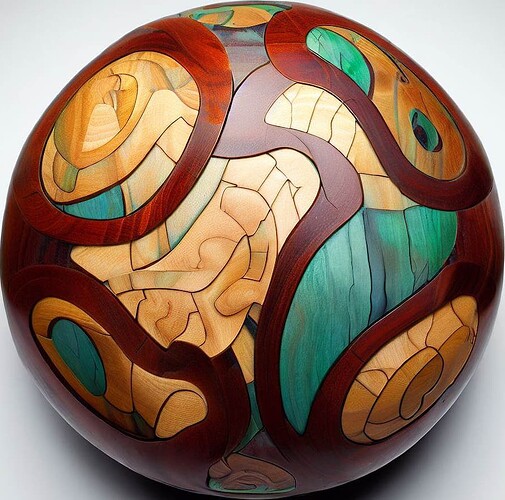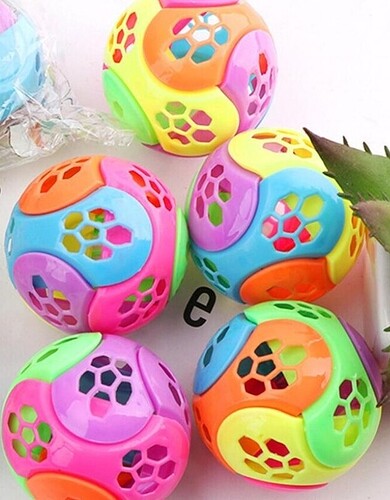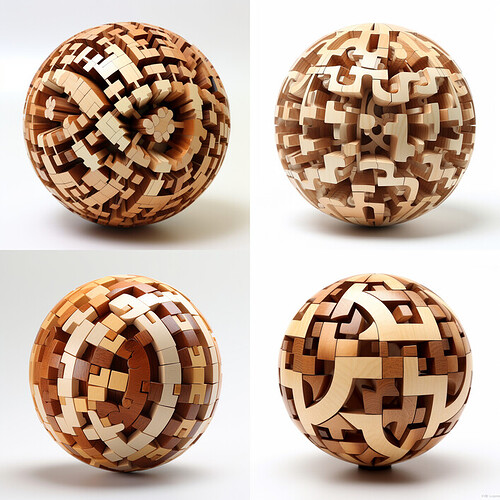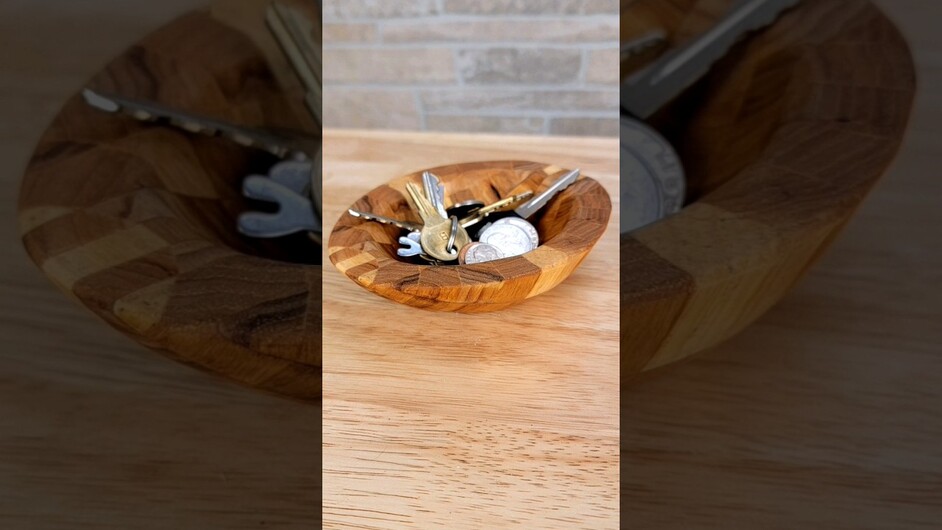No, I haven’t figured how how to do this for real. Yet. ![]()
Well…it is really pretty. Looks like a big challenge.
Just sketch the design on a toy ball and use that to make the shapes. How is easy enough. It would be the doing that would have sent me over the edge of sanity and I am too close already.
Reminds me of those plastic puzzle balls that were huge in the 90s. The kinds we got out of the gumball type machines. These guys, but without the fancy holes:
Is that wooden ball even real? I just asked Midjourney for a 3d spherical wooden puzzle box, it’s getting hard to tell.
You’re right, it’s not real, but it would be really cool to make.
It was made using DALL-E 3. (At the moment you can only access that via Microsoft Bing Image Creator. It’ll be made available next month in ChatGPT.)
I don’t recall the exact prompt, but I think it was something like "A sharp top-down image of a hemispherical wooden opus sectile with multicolored wood inlay of complex curvy shapes. "
Anyway… it seems like there’s at least a chance it can be done with a GF. The goal would be using actual wood inlay, closely fitted and polished into a smooth sphere. Sticking on flat veneer wouldn’t work except for the smaller pieces. To get consistent grain across the larger areas, probably have to use thicker pieces and sand them down…
Not sure yet. But for now I’ve got other stuff to work on, so I’ll let this one simmer.
Your problem is going to be the kerf profile… getting a close fit on a curved surface will be difficult.
That being said, someone once measured the kerf angle and posted it here. it is theoretically possibel that you could leverage that with thicker materials (1/4"), then make essentially a segmented spheroid:
Something like a floret sphere might work: Floret geodesic sphere
Where you glue all the faces together, relying on your kerf angle to give the necessary curvature.
Once done, you could use a variety of techniques to make it truly spherical, I’d guess.
You see this concept leveraged in segmented bowls for lathe work; often in 2d and layered, but occasionally with 3d tricks like this guy:
Lol I see you’re ahead of me here:
![]()
I think the problem is going to be keeping grain continuity while dealing with the curvature (if using only the GF and not other woodworking tools)
Oh yeah grain continuity is hard.
Happily this isn’t my problem over here in theoretical-land. Good luck! ![]()
A slice near a pole could be fairly large as it would be a relatively small excess height, and a pole can be anywhere so random interlocking circles and dots could cover most of the area, especially if one could hollow out the center of the dots a bit. Building it would not be that hard as it could be glued to that ball you were designing it to in the first place.
As I pointed out actually doing it might be a nightmare as there would be a necessity of considerable work with a sander and flexshaft to have all edges vertical to the center of the ball.
Then again perhaps you could put AI to doing that part too!
![]()
Yeah, won’t be too long before we’re all completely redundant!
This topic was automatically closed 32 days after the last reply. New replies are no longer allowed.



